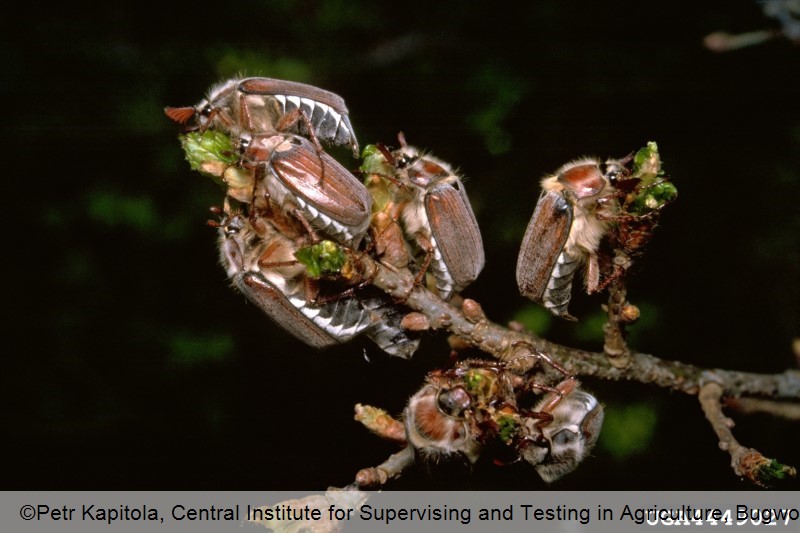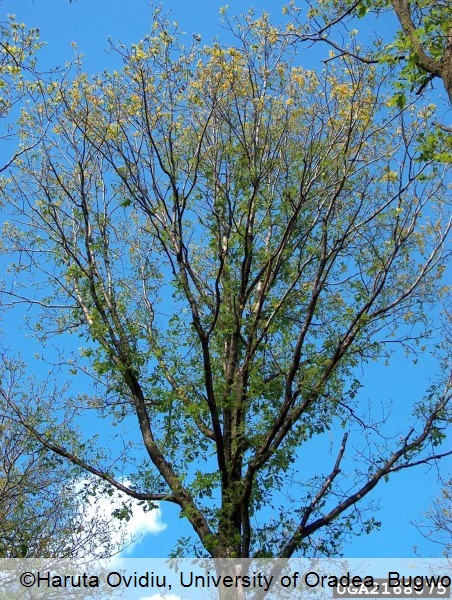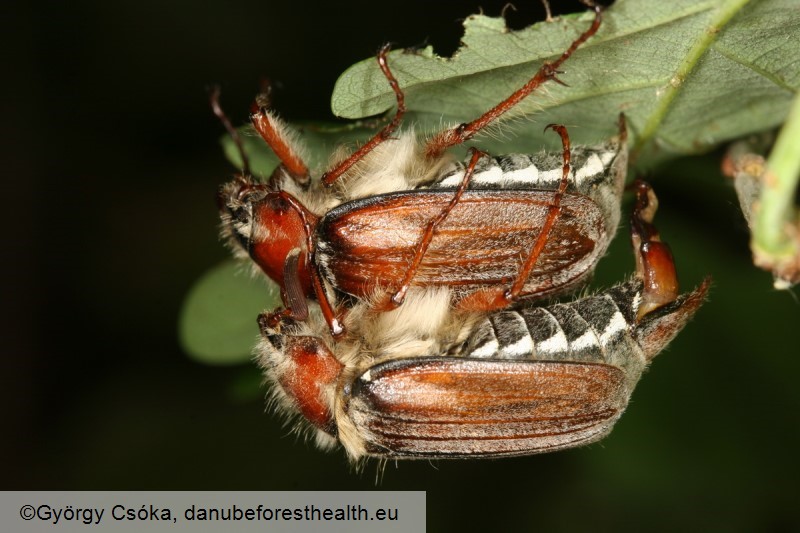Animalia
The common cockchafer and the forest cockchafer
Melolontha melolontha and M. hippocastani
Andreja Kavčič
|
|

Fig. 1. A M. melolontha adult

Fig. 2. Melolontha sp. maturation feeding on oak

Fig. 3. Defoliation on sesile oak (Quercus petraea) caused by the common cockchafer, M. melolontha, maturation feeding

Fig. 4. Melolontha sp. eggs in the soil (Quercus sp.)

Fig. 5. A M. melolontha grub

Fig. 6. Damage on a Scots pine (Pynus sylvestris) seedling caused by M. melolontha grubs feeding on the plant´s roots

Fig. 7. M. hippocastani adults
DETECTION PERIOD:
Adults fly between April and May. Grubs can be seen in the soil overgrown by different types of vegetation all year round.
DESCRIPTION:
Adults of the common cockchafer and the forest cockchafer are big brown beetles. M. melolontha beetles are 25–30 mm in length, M. hippocastani beetles are slightly smaller and reach 20–25 mm in length. Beetles of both species can be distinguished by the rear end (pygidium), which is long and slender in M. melolontha and short and knob-shaped in M. hippocastani. The development of both species lasts 3–4 years. Adults emerge between April and May. They are most active in the dusk. After maturation feeding in the canopy (young beetles feed on leaves and young shoots), females lay eggs in the soil. Larvae that hatch are called grubs and feed on fine roots. Larvae are cream coloured, C-shaped and have an extensive abdomen, the end of which is dark and swollen. Larvae pupate in spring.
HABITAT:
Natural habitats, nurseries, plantations and urban areas. In forested areas, they are particularly attracted to forest edges. Larvae feed on small roots of various plant species, broadleaves, conifers and grasses.
STATUS:
The common cockchafer and the forest cockchafer are native in Europe and are common throughout the Refocus area. Common are outbreaks, which occur periodically.
IMPACT:
Main damage is caused by larvae, which feed on small roots and cause irreparable damage to small plants. The affected plants wilt, lose stability, turn brown and die. Maturation feeding causes defoliation but it only appears early in the summer and the trees can recover during the rest of the season.
SIMILAR SPECIES:
Adults and larvae are very similar to the June beetle, Amphimallon solstitiale. Larvae differ in the way they move on smooth surfaces. Melolontha larvae resemble also larvae of Cetonia aurata, from which they can be distinguished by the way they move. Phyllopertha horticola adults are shinny reddish brown and smaller, and larvae are also smaller than those of Melolontha.
|